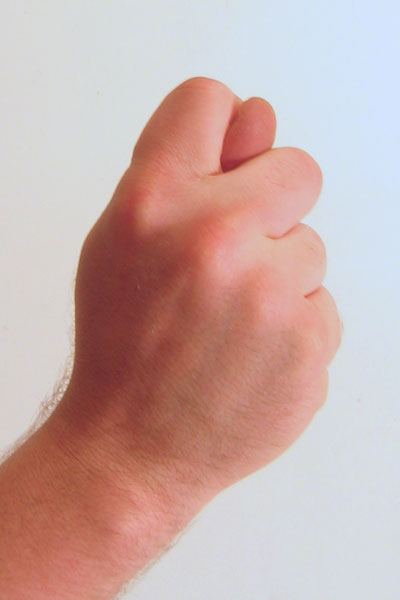GESTURES
AROUND THE WORLD

http://rfclipart.com/collection-of-hand-gesture-signs-5246-vector-clipart.html
“It's
a rather rude gesture,
but at least it's clear what you mean.”Katharine Hepburn
- Definition of gesture in Oxford dictionary.
A
movement of a part of the body, especially a hand or the head, to
express an idea or meaning
- Gestures vary from country to country and culture to culture. It is very important to learn, comprehend, and be mindful of gestures when traveling abroad in order to prevent uncomfortable miscommunications.
Firstly,
put yourself to the test with a short quiz on the body language
cultural differences.
http://www.funtrivia.com/playquiz/quiz31230423c0d88.html
- The following list are some common gestures which people use around the
world
and the meaning is different in different countries.
Thumbs
up

http://www.fastcodesign.com/3021307/innovation-by-design/why-facebooks-new-like-button-had-to-ditch-the-thumbs-up
The
thumbs up signal has a generally positive connotation in
English-speaking countries. The thumbs-up
gesture is
used in many cultures to signify a job well done or something is
approved. However, if it is used in Latin America, West Africa, Iran,
Iraq, Afghanistan it is seen as an ‘up yours’.
The
Okay

http://www.outreach-u.com/wp-content/uploads/2013/02/okay-sign-1.jpg
In
general „the okay” means satisfaction. In Japan it denotes
"money," and it is commonly used to signify "zero"
in France. But In Brazil, the "OK" gesture is roughly
equivalent to the finger in the US.
Horn
fingers (corna)

http://www.instructables.com/id/How-to-properly-%22Rock-On%22/
Italians
describes it as "il cornuto," which means that your wife is
cheating on you. So you’re a cuckold. In America it has been
adopted by rockers as a sign of approval, and in essence ‘rock on’
Crossed
fingers
http://www.designofsignage.com/application/symbol/hands/image/600x600/hand-cross.jpg
In
general ‘to keep one’s fingers crossed for sb’ means I wish you
good luck. If you find yourself in Vietnam needing good luck it’s
probably best not to cross your fingers- they're considered to
resemble the female genitals.
The
‘V’ sign

http://peacesymbol.org/art/svg/peace/peace-symbol/gray-79-v-sign-peace-symbol-4-peace-symbol-sign-cnd-logo-openclipart-org-commons-wikimedia-org/
Generally
the V sign means peace or victory. But in
Australia, the United Kingdom, South Africa, and several other
countries across the world, it means "Up yours!" If you
show your fingernails it is a declaration of war.
Come
here

http://www.agefotostock.com/en/Stock-Images/Royalty-Free/IGM-19636067
The
gesture is used to motion somebody to come over. However, do not use
this alluring hand gesture in the Philippines. This is one of the
worst forms of hand gesture that
is being used only for dogs. If
you use this hand gesture you get yourself arrested in Philippines.
In Singapore, it is an indication of death.
The
point

http://en.wikipedia.org/wiki/Diver_communications#mediaviewer/File:Dive_hand_signal_Turn_dive.png
- Belgium, the Netherlands, Germany, Austria – a gesture for the numer 2
- China – a gesture for the numer 8
- Reveals something is not good
The
thumb in a fist

http://upload.wikimedia.org/wikipedia/commons/e/e4/Gesture_fist_with_thumb_through_fingers.jpg
This is one of good hand gestures, as it indicates good luck and fertility and away toward off the evil eye.Australia, UK, Canada - a common playful gesture used by adults towards children; Turkey - this is seen as aggressive and rude.
The
middle finger

http://www.theoutsiders.net/item/8143,middle-finger
One of the most offensive and rude hand gestures around the world is the finger. The middle finger is universally understood as an ‘f*** you’
You
should avoid using certain gestures in countries whose cultures are
new to you if you don’t want to offend anyone. If you remember the
meaning of these gestures you feel more comfortable when you’ re
abroad. I
hope this article on hand gestures in different cultures has helped
you learn some safe methods of communication in new countries and now
you know something more about the body language.
Have
you ever been interested in this topic?
Do
you think it is useful knowledge in everyday life?
Sources:
http://www.huffingtonpost.com/gayle-cotton/cross-cultural-gestures_b_3437653.html
http://www.buzzle.com/articles/hand-gestures-in-different-cultures.html

I think that this topic is very interesting and useful. We can learn about different cultures and about their point of view in same case. This knowledge is very helpful when we are going abroad - we can protect ourselves against make something offensive to others. In my opinion, this is incredible that the same gestures can mean definitely something different!
ReplyDeleteIt's very useful and good prepared presentation! I think people usually don't pay attention to the meaning of gestures in other countries. It may cause some problems in communication. So, when we haven't such knowledge about this... Maybe sometimes it is better to abstain from using characteristic gestures abroad. :)
ReplyDeleteThis is a very useful presentation as Laura said and it is really good :). I didn't know that many of popular gestures in Poland are different in other countries and even those non offensive can be wrong in some places. I think people should know about it when going abroad, not to make themselves a big trouble.
ReplyDeleteI have long been interested in this topic (body language, gestures). So if you have any questions I will be happy to answer them. Thank you for sharing your opinions about my presentation.
ReplyDeleteI think this presentation will be useful to all of us, because gestures that we make, may be perceived by other people in different ways. Some gestures may offend someone, and we will not even know about it. For example, I thought that for every person the V sign means peace or victory, but in some places it may mean something completely different and even declarations of war. Therefore, I have the same opinion as Katarzyna that before we set off abroad, we should check the meaning of various gestures and learn about other cultures.
ReplyDeleteGreat presentation! It is very useful to know what all of this gestures mean. Today we can go everywhere so it is very important to know that some gestures which are positive in our country may be negative in others.
ReplyDeleteI think that this presentation is really great! People should know what does the gestures mean in different countries. This is very important beacause without connections basic gestures can lead to misunderstandings. Someone can may feel resentful. The most popular gesticures are in India. For example: pulling the ears means: that we know that we have done wrong and we apologize, touching someone's feet is a sign of respect, folding hand and saying at the same time: NAMASTE (GREETING)- is welcome, and many, many different gesticures. “Beautiful is not this what a beautifully says, but that his gesture of another person is not cooled.”
ReplyDeleteCongratulation! Very good presentation. It's very important to know what mean some gestures in different cultures. Especially if we want go abroad, because it help prevent misunderstanding. Gestures are very helpful in everyday life if we want to say something without using words for example if we must be silent or we want keep something in secret. It's very important to know what people want to tell us by gestures.
ReplyDeleteThis presentation may be very useful to everyone travelling abroad - it may even save you from making a big mistake. It's incredible how these common known in our country gestures can be varying in meaning across the globe. The most funny thing about it is that only the F-word is universal in every code. :)
ReplyDeleteThank you for this presentation ;) I guess It it's not only important but necessary to know meaning of gestures in different countries to avoid misunderstanding and prevent your behaviour from being received as rude. So helpful in travelling ;)
ReplyDeleteThis comment has been removed by the author.
ReplyDeleteI have heard something about misunderstandings because of different meaning of gestures in different countries, but I have never checked which one can be risky. This presentation show the most popular gestures and what exactly they mean in different cultures. It will be very useful when I travel around the world ;) Thank you.
ReplyDeleteInteresting presentation. Can't say that very useful. I can't even remember when was the last time I saw someone use gestures. Nowadays people using maybe only "Come here" gesture. Now that I think about it, when was the last time you saw someone "Flipping the bird" aka "The middle finger"? Nonetheless cool presentation.
ReplyDeleteIt was very helpful presentation. I heard somewhere about that similar gestures in different country's means different thinks. Now I know perffectly that's true. But I thought that in some gestures are the same in all world. That's really shocked me that's in some places when I want to show something nice, my gesture could be interpret totally opposite.
ReplyDeleteI must remember this presentation and I wish I read it before the last holidays when I went to Turkey. I didn't know there are such big differences in gestures meaning, even if for me they are obvious, like 'come here'. Abroad, you must be careful because you can offend somebody and have troubles, same as you wouldn't be happy seeing somebody's middle finger.
ReplyDelete